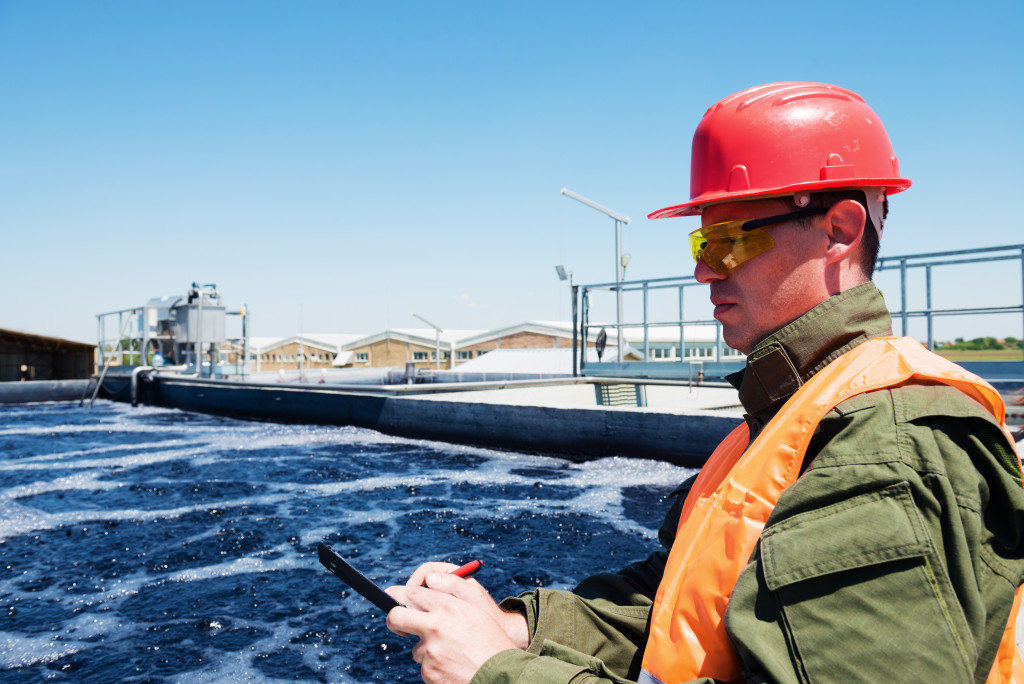- Choose and optimize the treatment process to achieve the best possible output quality.
- Consider the amount of water to be treated to improve efficiency and comply with regulations.
- Be aware of applicable laws and guidelines to guarantee safety and prevent legal repercussions.
- To install the equipment properly, you need to consider where the facility is located, how much space is required, and ensure enough ventilation and lighting.
When constructing a water treatment facility for your factory, several important things must be considered. This article will walk you through choosing the right system for your facility. With careful planning and research into these key points, you can ensure your new facility is efficient and compliant with all relevant regulations.
Treatment process selection and optimization
When constructing a water treatment facility for a factory, it is crucial to consider the treatment process selection and optimization. Treatment selection refers to choosing the appropriate processes to transform raw water into clean, safe water for industrial use. This decision significantly impacts the overall efficiency of the water treatment system.
Optimization, on the other hand, involves maximizing the efficiency of the selected treatment process to ensure the highest quality output possible. Random tower packing is necessary for treatment process selection and optimization as it enhances the efficiency of the treatment process and helps reduce operational costs.
Therefore, looking for random tower packing suppliers, one should consider the importance of treatment process selection and optimization. Considering these aspects of water treatment facilities guarantees the factory’s smooth running and reduces the overall costs associated with wastage and maintenance.
System considerations
Considering the various water treatment systems available is the first step in selecting the right one for your facility. Here are some tips on what to consider:
The volume of water needing treatment

When building a water treatment facility for a factory, it is crucial to consider the volume of water that will require treatment. This is because water treatment facilities must be designed and constructed to handle specific volumes and types of water. Additionally, failure to properly consider the volume of water needing treatment can lead to inefficiencies, high costs, and potential issues with compliance regulations.
Therefore, the facility’s design and construction must consider the specific volume of water that will be processed to ensure optimal efficiency and effectiveness. By doing so, factories can ensure their water treatment facilities meet all necessary regulations and operate at full capacity.
Regulations and standards compliance
When constructing a water treatment facility for a factory, it is crucial to consider regulation and standard compliance at every stage. Standards and regulations ensure the safety of the workers working in the factory and those who consume the treated water.
This includes considering the laws and regulations that pertain to air and water pollution, wastewater treatment, and occupational safety. Not following these regulations can result in severe legal, environmental, and human health consequences.
Furthermore, compliance with these standards can save much money in fines, shutdowns, and costly lawsuits. Therefore, understanding and following these rules and regulations when constructing a water treatment facility must be a top priority from the beginning of the project to ensure that everyone is protected.
Physical requirements for installation
When constructing a water treatment facility for your factory, it is essential to carefully consider the place, space, and physical requirements for installation. The facility’s location can greatly affect its performance, environmental impact, and overall cost. For instance, the facility needs to be situated in an area easily accessible for water delivery and maintenance.
Additionally, it should have enough space to accommodate the required equipment and ensure proper ventilation and lighting. Proper planning and consideration of these factors can help to ensure an efficient and effective water treatment facility that meets the needs of your factory operations.
Cost-effectiveness & energy efficiency

For any industrial facility, keeping operational costs low while maximizing efficiency is essential for success. When constructing a water treatment facility, it is important to consider both the cost-effectiveness and energy efficiency of the system. Cost-effectiveness refers to the ability of the facility to produce clean water while minimizing expenses, including labor, equipment maintenance, and chemical usage.
On the other hand, energy efficiency requires the facility’s design and operation to be as energy-efficient as possible, reducing energy usage and environmental impact. Properly considering these factors ensures that a water treatment facility operates optimally, reducing environmental harm and positively impacting the company’s bottom line.
Water quality goals
When constructing a water treatment facility for a factory, it is crucial to consider water quality goals. These goals determine the optimum level of water purity required to support safe operations at the facility. Water quality can be affected by several variables, including industrial processes, the source of the water, and the environment.
It is essential to evaluate these factors before designing a water treatment facility. Properly considering water quality goals ensures that the facility will meet the requirements of the factory’s industrial processes and the regulations of the local governing bodies. Attention to detail is crucial when designing such facilities.
These are some of the key points that must be considered when constructing a factory’s water treatment facility. To achieve the best results, comply with regulations, save energy, and cut costs, it’s crucial to plan properly and have knowledge of these factors.












